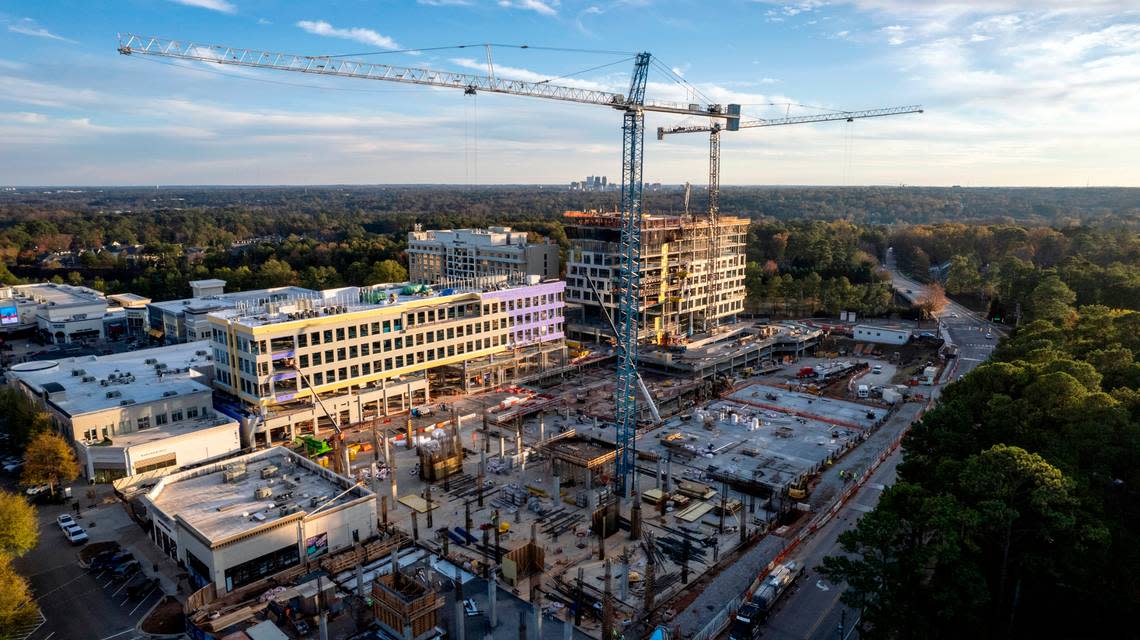The NC Triangle has tons of vacant office spaces. Could they become new homes? | Opinion

Earlier this week, The News & Observer published a story on the “anemic” state of commercial real estate across the Triangle. An estimated 3.5 million square feet of space is going unused, and office vacancy is up to 13.3%. That’s the most vacancies the industry has seen since the early aughts.
What’s interesting about the slow commercial rental market is how out of pace it is with the residential side of the business. The Triangle has a little more than 1 in 10 commercial spaces sitting empty, but the state could be about 900,000 residential units short by 2030 at our current rate of growth (The Raleigh-Cary area is short by more than 14,000 units). The average cost of a single family home in the Triangle rose 12% between 2020 and 2021.
This led me to wonder: would it be possible for some of these commercial properties to be transformed into residential properties? It isn’t unheard of: in some North Carolina municipalities, old tobacco warehouses have been converted to lofts. Office buildings in bigger cities with housing shortages, like San Francisco and New York City, have been retrofitted into apartments.
I asked Patrick Young, Raleigh’s Director of Planning and Development, if this was a possibility for empty commercial properties in the Triangle.
“Here’s the bottom line,” Young said. “We absolutely need an ‘all of the above’ strategy to affect our housing crisis effectively, and when I say ‘all the above,’ I mean any strategy that’s got the possibility of success, and this is one of them.”
There are drawbacks, Young said, that make converting these spaces more challenging. For example, residential zoning requires units to meet a certain threshold of natural light. This is easy to come across in older warehouses, but less so in buildings full of cubicles. Young notes that to accommodate this in other cities, some apartments are 10 feet wide and 30 feet long to maximize window space and meet the natural lighting requirements.
“There’s nothing wrong with that, other than it’s very unusual, which makes it maybe difficult to rent or sell, which makes it difficult to finance, which makes the conversion harder,” he said.
Another issue with converting commercial property is location. While there is a surplus of office space on the market in the Triangle, not all of it is in the tall buildings on Fayetteville Street in Raleigh. “Class A” buildings, ones that are new or renovated and in a desirable location, are in high demand as commercial spaces. Class “B” or “C” units, which are older or further from downtown, are the ones struggling to fill cubicles and storefronts. The same could be said of residential buildings: an apartment complex that’s relatively new and close to downtown is easier to sell than one further away, or without marketable amenities.
Finally, it all comes down to price. It is often cheaper for a developer to demolish an existing building and start fresh, rather than retrofit apartments into a building that was made for offices. Young says that if the federal government offered incentives to builders, as they do for developers renovating old tobacco warehouses, there may be more incentive to retrofit a building to meet the community’s need. After all, it is more environmentally friendly for developers to transform an already-existing building into apartments.
“It’s really all about reducing risk and increasing opportunity for the development community to bite at this,” Young says.
Northgate Mall in Durham is an example of a project that seems suited for residential development in theory but would be difficult in practice. There are technical issues, like plumbing, electrical and natural lighting that make it a difficult project, and it’s unlikely a developer would want to take the cost of such a project on.
To Young, however, we need to remember that all solutions to the housing crisis should be considered. This is one tool in the toolbox, he says.
For now, it’s more likely that those buildings continue to sit empty. But as the Triangle’s housing crisis worsens, these conversions and more need to be on the table.
